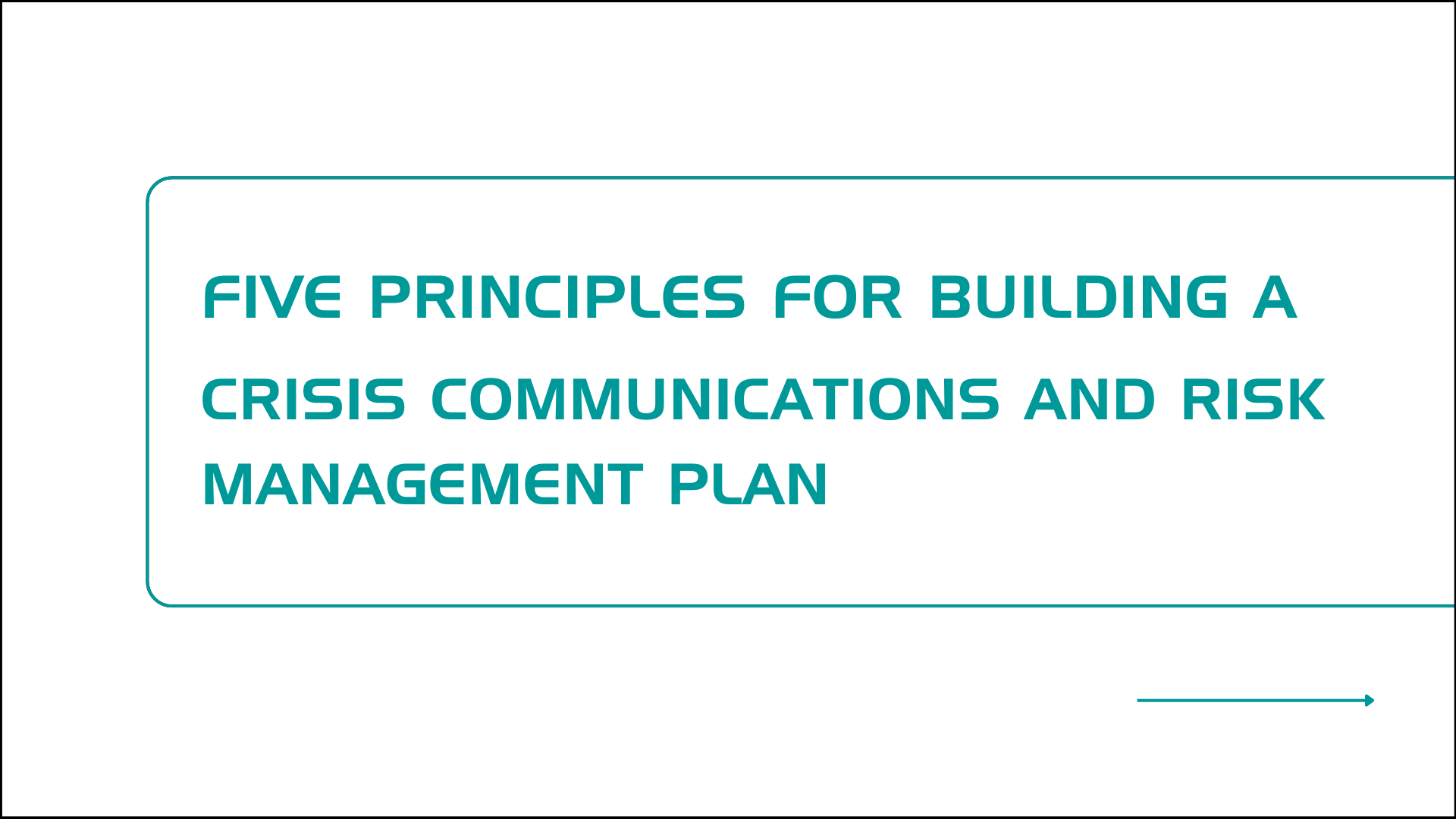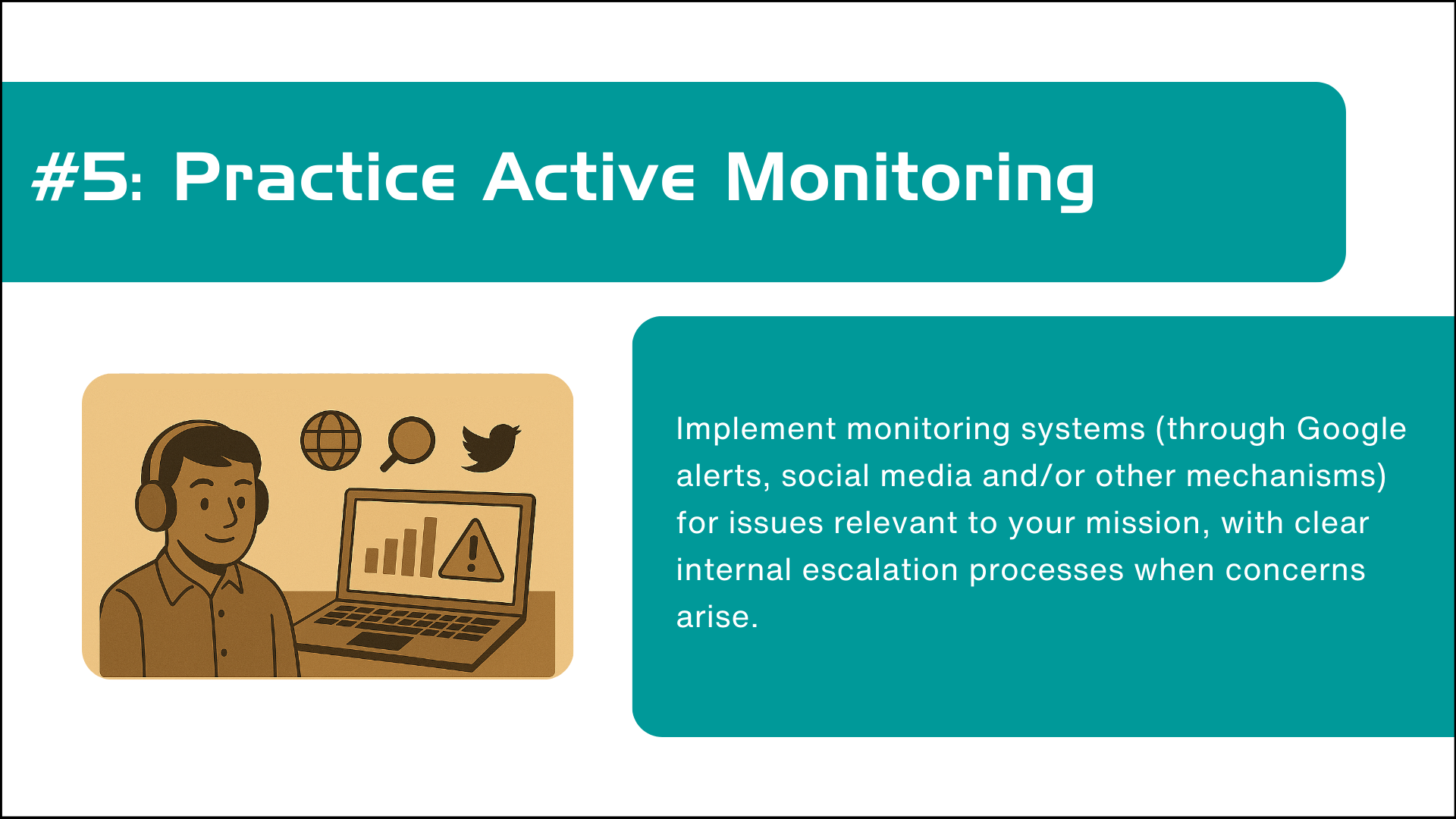
In today’s charged political environment, where every message carries heightened risk and could trigger backlash or even a crisis, effective communication requires careful strategy and thoughtful planning. Success in this volatile landscape demands meticulous preparation, unwavering clarity, and disciplined focus – whether you’re speaking publicly, communicating privately with key stakeholders, or simply building your readiness for when the moment demands action. When the goal is sustainability and ensuring your organization can continue its important work despite political headwinds, communication planning is key.
Today’s Communication's Landscape
The current environment creates unique challenges for all organizations:
- Speed has accelerated. Issues can explode from a local concern to a national controversy in hours, not days.
- The media landscape is fragmented. Local TV news remains one of the highest consumption mediums and local radio is still one of the most trusted, although news deserts are expanding and information flows through increasingly complex channels.
- Stakeholder expectations have evolved: Your core audiences – from employees to funders to community members – look to you for clarity in confusing times, even if you’re not speaking broadly.
- Political dynamics are volatile: Organizations face complex terrain where both action and inaction carry implication.
Preparing for Whatever Comes: A Framework for All
Whether you’re ready to speak boldly or focused on building internal readiness, these principles apply:
1. Know Your Core Audiences
Effective crisis communication starts with understanding who matters most to your organization. For some, this might be the general public. For others, it might be employees, funders, customer segments, peer organizations, or specific communities you serve.
Action Step: Map your stakeholders by priority and influence. Identify what each group needs from you during uncertain times and develop targeted communication approaches for each.
2. Define Your Non-Negotiables (Even If Only Internal)
The strongest responses – public or private – are rooted in organizational values. These become your decision-making framework when clarity is in short supply. Research consistently shows that organizations maintaining alignment with their core mission and values earn respect across political divides. According to the Edelman Trust Barometer, organizations that consistently demonstrate their values through both communications and actions build stronger trust. Their data shows that “living purpose” is a significant trust builder across diverse audiences.
What’s more, Edelmen’s 2024 barometer found 61% of consumers believe brands shouldn’t back down after taking a stand – highlighting how consistency builds trust even in polarized environments. This holds true across the political spectrum. Patagonia consistently ranks as one of the most respected brands in America, even ranking in the top 10 for conservatives despite its progressive stances and overt political messaging – likely because its positions are perceived as authentic, consistent, and honest.
Action Item: Document your organization’s core values and how they translate to specific positions or decisions. This internal clarity is valuable even if you never share it publicly.
3. Build Your Communications Infrastructure
A crisis demands rapid response capabilities – whether you’re responding publicly, engaging private stakeholders, or managing internal communications.
Action Item: Create templates, approval processes, and distribution channels for different types of communications before you need them. Develop systems for spokesperson preparation if and when public response becomes necessary.
4. Develop Decision Protocols
Uncertainty about who decides what can paralyze crisis response. Clear decision trees prevent this paralysis.
Action Item: Create protocols that map out roles, responsibilities, and approval processes for different scenarios. Who assesses situations? Who crafts messages? Who approves them? Who delivers them, and to whom?
5. Practice Active Monitoring
Organizations that navigate crises effectively aren’t caught by surprise. They maintain awareness of emerging issues – even if they’re not yet ready to respond publicly.
Action Item: Implement monitoring systems (through Google alerts, social media and/or other mechanisms) for issues relevant to your mission, with clear internal escalation processes when concerns arise.






Communicating in Risky Times
The path forward looks different depending on your organization’s position and readiness:
Not every organization is positioned to speak publicly in challenging moments, and that’s okay. Focus on:
- Internal clarity: Ensure your team understands your values and position, even if not communicated externally
- Stakeholder management: Develop targeted communications for your most essential relationships
- Scenario planning: Prepare for potential situations and practice responses in low-stakes environments
- Capacity building: Invest in communications training and resources that increase your readiness over time responses in low-stakes environments
- Value consistency matters even when building internal readiness. When your internal team sees alignment between stated values and actual decisions, trust flourishes – creating the foundation for effective stakeholder communications when challenges arise.
Many organizations need to communicate with specific audiences while avoiding broader public engagement:
- Stakeholder segmentation: Identify which groups need what information and when
- Channel selection: Choose communication vehicles that reach intended audiences without unnecessary exposure
- Feedback Mechanisms: Create ways for key stakeholders to share concerns and questions
- Message discipline: Develop clear, values-aligned messaging that addresses stakeholder concerns while avoiding unintended controversy
Some organizations are positioned to shape public conversation. For these organizations:
- Strategic visibility: Identify opportunities where your voice adds unique value to public discourse
- Message amplification: Develop approaches that extend your reach to target audiences
- Coalition building: Find aligned partners who strengthen your message
- Narrative shaping: Frame issues in ways that advance your mission and values
- Organizations that maintain mission-value consistency in their public communications build credibility with audiences across political divides. This credibility becomes particularly valuable during polarized debates where your organization’s perspective can help bridge divides rather than deepen them.
Moving Forward With Purpose
Wherever your organization falls on this spectrum, remember that effective crisis communications and risk management isn’t about having all the answers – it’s about having the right processes, people, and principles in place to navigate uncertainty. Some organizations will find their strongest path forward in bold public leadership. Others will focus on targeted communications to key stakeholders. Still others will concentrate on building internal readiness for the future. All of these approaches are valid.
What matters most is that your communication choices align with your organizational capacity, strategic priorities, and mission-critical relationships – while consistently reflecting your core values and purpose. This consistency builds trust that transcends political boundaries and positions your organization for long-term impact, regardless of short-term turbulence.
In uncertain times, preparation isn’t just prudent, it’s essential. And with the right foundation, your organization can navigate whatever challenges arise with confidence and clarity.
EMC Communications guides partners at every stage of communications readiness – from building fundamental capabilities to executing high-impact public campaigns. We help mission-driven organizations develop the systems, messages, and strategies they need to protect and advance their work, especially in challenging times.

